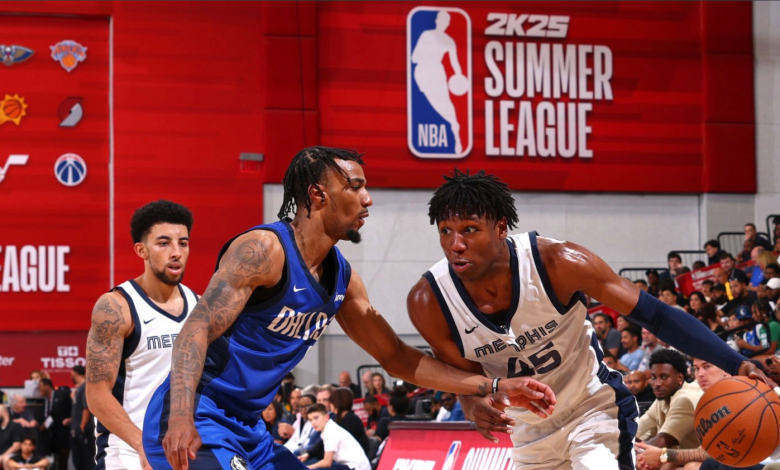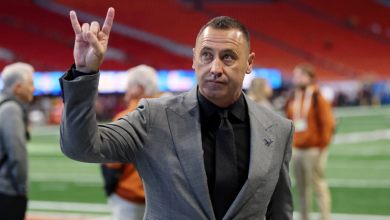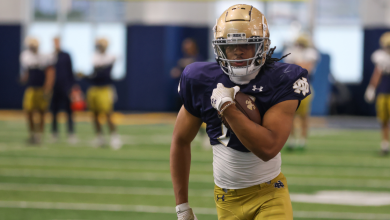A change in the NBA? The league’s new concept’s concealed reality that will affect player moves

The NBA has long been a league of evolution, consistently adjusting its rules, format, and financial structures to maintain competitive balance and entertainment value. However, a new concept introduced by the league could have a profound impact on how teams build their rosters, how players move between franchises, and how the overall power structure of the NBA shifts in the coming years.
While the league has presented this change as a progressive step forward, there are underlying realities that could significantly alter the free agency market, trade negotiations, and team-building strategies. This article explores the implications of the NBA’s new approach and what it means for the future of the game.
The NBA’s New Concept: What’s Changing?
Over the past few seasons, the NBA has been experimenting with various changes, from the introduction of the Play-In Tournament to discussions about an In-Season Tournament modeled after European soccer leagues. However, the latest shift focuses on player movement regulations, salary cap structuring, and incentives aimed at discouraging super teams while promoting parity across the league.
Key elements of this change include:
- A more rigid luxury tax threshold that penalizes teams heavily for exceeding payroll limits.
- Restricted player movement rules to prevent stars from forcing trades too frequently.
- New contract incentives aimed at keeping players with their original franchises longer.
- Adjustments to the trade deadline and midseason transactions to balance competition across conferences.
These changes, while appearing to stabilize the league, may have unintended consequences that reshape how players make career decisions.
The Hidden Reality Behind These Changes
While the NBA’s stated goal is to create a fairer playing field, the reality is that these rules could fundamentally shift power away from players and back toward teams and owners. Over the past decade, the NBA has become a player-driven league, with stars wielding unprecedented influence over trades, free-agent signings, and team-building strategies. The new regulations could curtail that freedom in several ways:
1. Limited Star Player Mobility
One of the most significant effects of the new policy changes will be restrictions on player movement. In recent years, players like LeBron James, Kevin Durant, and James Harden have dictated their careers by choosing destinations that best suit their championship aspirations. Under the new guidelines, trade demands and forced exits could come with stiffer penalties, reducing the number of blockbuster moves.
For example, players who attempt to force their way out of a contract early may face financial repercussions, such as forfeiting a portion of their salaries or endorsement deals being affected due to new contract language enforced by the league’s collective bargaining agreement.
2. Super Teams Become Less Viable
The NBA has long been defined by super teams—dominant rosters built around multiple All-Stars. Think of the Golden State Warriors dynasty, the Miami Heat’s Big Three, or the Brooklyn Nets’ failed super team experiment. The NBA’s new financial framework will make it harder for teams to hoard multiple superstars under one roof.
By imposing harsher luxury tax penalties and eliminating certain exceptions that allowed teams to sign additional stars despite cap limitations, the league is discouraging this era of “big-market dominance.” Small-market teams like the Indiana Pacers or Oklahoma City Thunder may have an improved chance at keeping their homegrown talent rather than losing them to powerhouse franchises like the Lakers or Heat.
3. Mid-Tier Free Agents May Lose Bargaining Power
While star players may still find a way to navigate the system, mid-tier free agents—those who aren’t quite All-Stars but play crucial roles on contending teams—could face new hurdles in securing long-term, high-value deals. With tighter salary caps and fewer exceptions, teams will need to be more strategic with their spending, potentially leading to fewer lucrative contracts for role players.
4. The Trade Market Becomes More Conservative
The NBA has become known for its high-profile midseason trades, but the league’s new rules may curb the frequency of these transactions. With revised trade restrictions and salary-matching regulations, teams will have fewer opportunities to make significant midseason changes. This could lead to:
- Fewer deadline-day trades, reducing last-minute shake-ups that often define playoff races.
- More reliance on internal development, forcing teams to focus on drafting and developing talent rather than acquiring stars via trade.
- Longer-term roster stability, as teams will be more hesitant to make impulsive moves due to financial constraints.
What This Means for the Future of the NBA
With these changes in place, the NBA could be heading toward an era where teams and owners hold more leverage, and players are encouraged (or forced) to stay in one place for longer periods. While some fans may see this as a positive—bringing back the days of franchise loyalty—the reality is that it could also hinder player empowerment and reduce the thrilling free-agency drama that has become a hallmark of the modern NBA.
Potential Outcomes to Watch
- Superstars may reconsider contract lengths. Instead of signing long-term deals, top players might opt for shorter contracts with opt-outs to retain control over their careers.
- Players’ unions may push back. The NBA Players Association could challenge aspects of these changes in future collective bargaining negotiations.
- Rival leagues could become more appealing. International leagues and alternative competitions (such as the Big3 or expanded European leagues) may offer enticing alternatives for players seeking more control over their careers.









